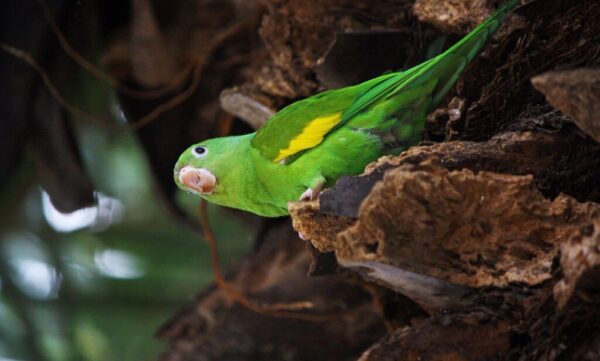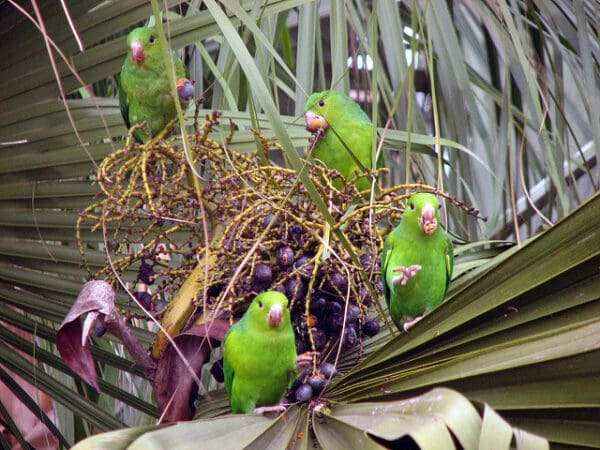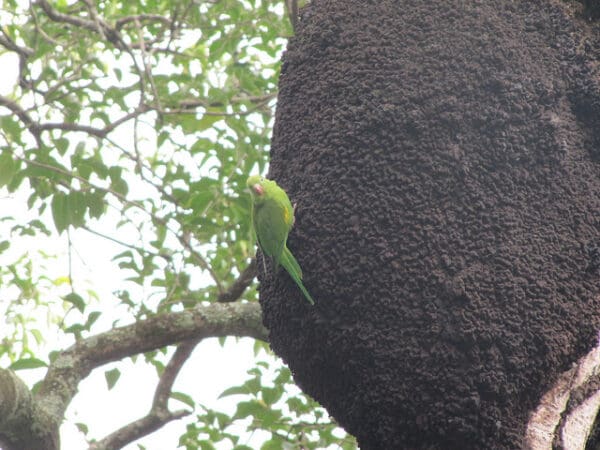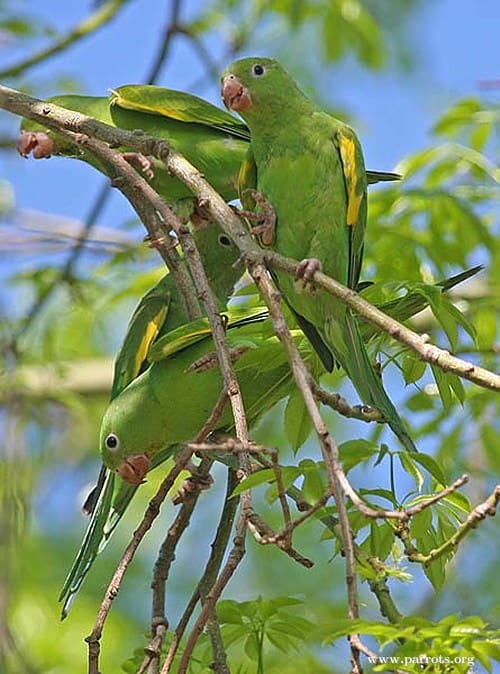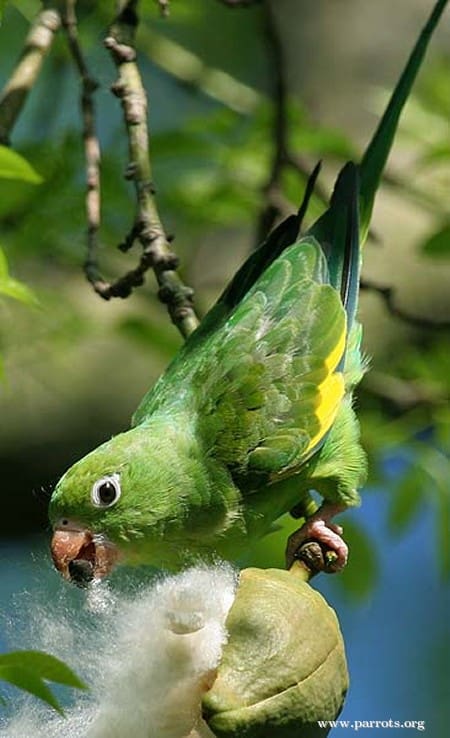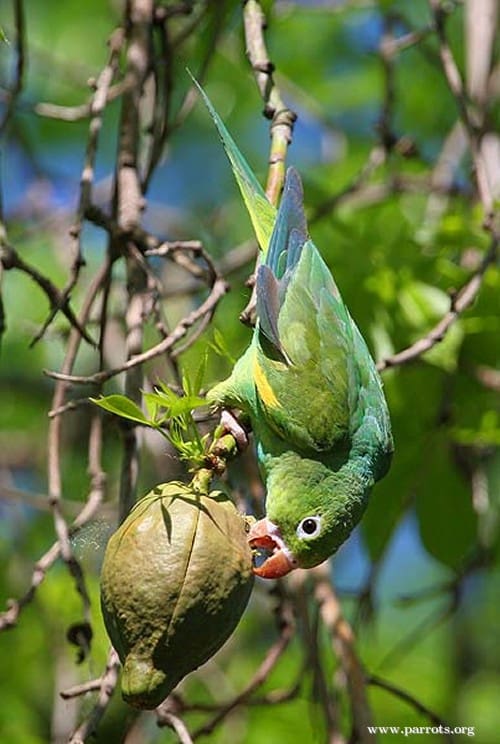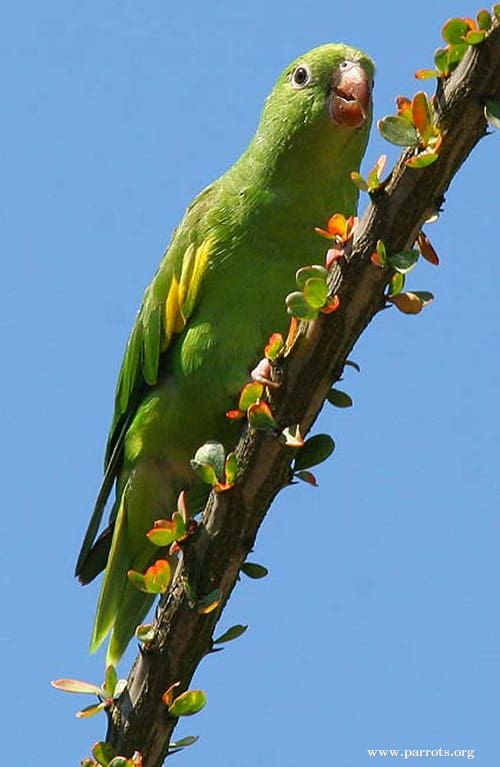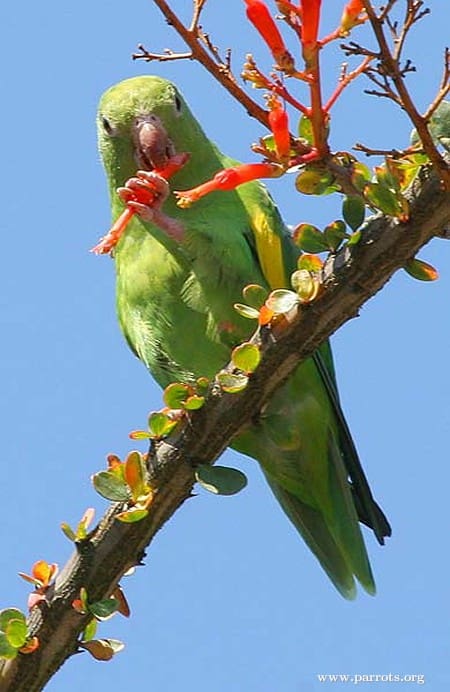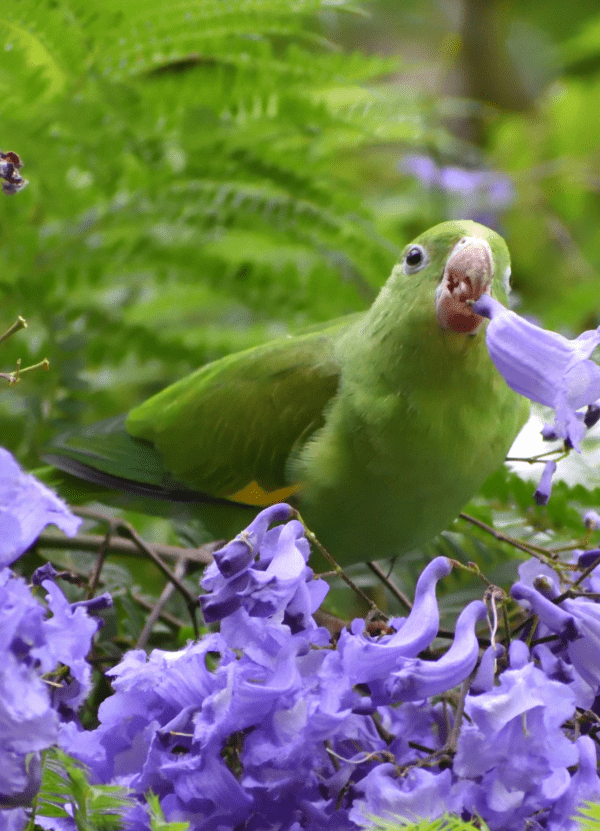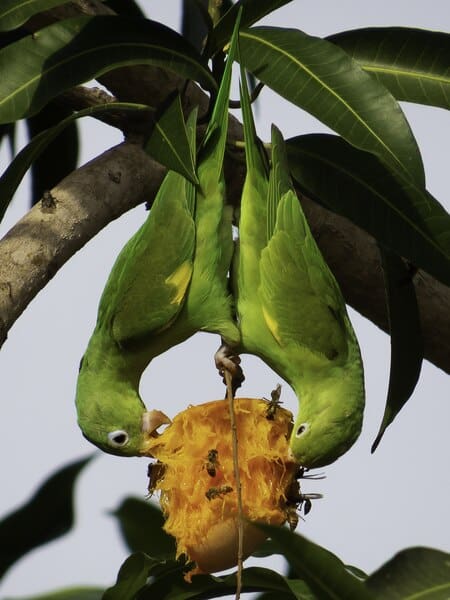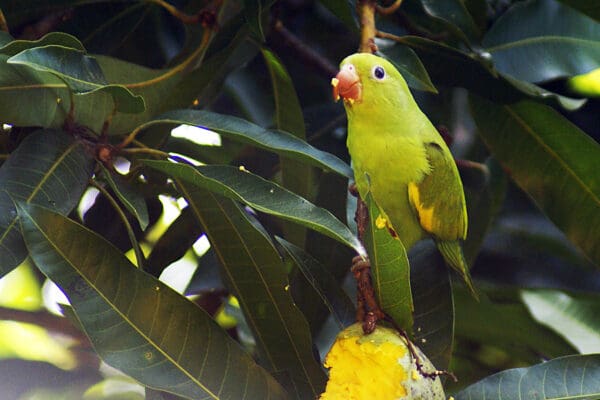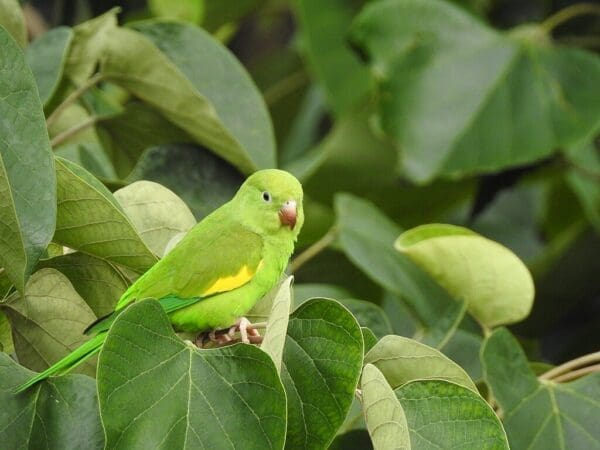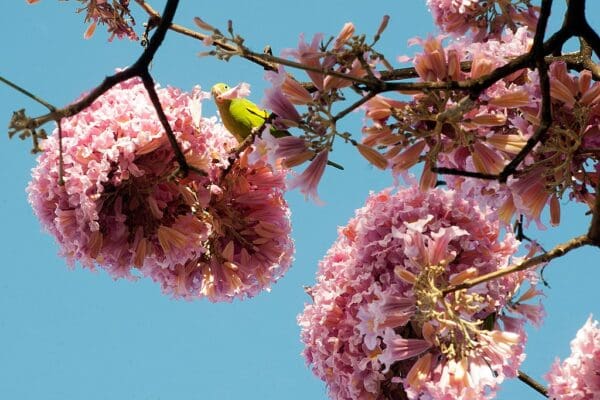Yellow-chevroned Parakeet
Also known as:
Canary-winged Parakeet, Behn's Parakeet (B.c. behni)
Also known as:
Canary-winged Parakeet, Behn's Parakeet (B.c. behni)

![© Henrique Oscar Loeffler [CC BY-SA 2.0] via Flickr Wild Yellow-chevroned Parakeets feed on palm fruits](https://parrots.org/wp-content/uploads/2023/01/wpt_Yellow-chevroned-Parakeet_1375-14-100x100.jpg)
![© Tom Benson [CC BY-SA 2.0] via Flickr A wild Yellow-chevroned Parakeet feeds on fruit](https://parrots.org/wp-content/uploads/2023/01/wpt_Yellow-chevroned-Parakeet_1375-13-100x100.jpg)
![© Chris Borkent [CC BY-SA 2.0] via Flickr A wild Yellow-chevroned Parakeet clings to an arboreal termitarium](https://parrots.org/wp-content/uploads/2023/01/wpt_Yellow-chevroned-Parakeet_1375-12-100x100.jpg)
![© Derek Keats (... on Erythrina velutina) [CC BY 2.0] via Wikimedia Commons A wild Yellow-chevroned Parakeet feeds on a blossom](https://parrots.org/wp-content/uploads/2023/01/wpt_Yellow-chevroned-Parakeet_1375-10-100x100.jpg)
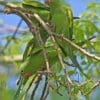
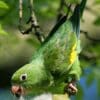
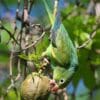
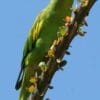
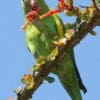
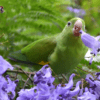
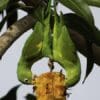
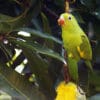
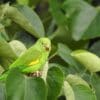


DID YOU KNOW?
The Yellow-chevroned Parakeet is an arboreal termite nester. The nest itself is called a termitarium.

Brotogeris

chiriri
Size:
22 cm (8.6 in)
Weight:
72 g (2.5 oz)
Subspecies including nominate:
two: B.c. chiriri, B.c. behni
Colour Adult:
B.c. chiriri: Both adults pale yellow/green, more so on underparts; lores green; green primary feathers basally tinged with blue; green secondary feathers; yellow secondary coverts. Beak orange/brown. Eye ring creamy white. Eye dark brown.
B.c. behni: Both adults as in chiriri, but lacking the yellow tinge to the green body colour; larger.
Colour Juvenile:
B.c. chiriri: As in adults but with shorter tail. Beak darker brown.
Call:
Calls made in flight are shrill and metallic; also abrupt, loud squawks when taking flight. Emits low, chattering notes while feeding.
Yellow-chevroned Parakeet – AVoCet Cornell Lab Macaulay Library
More Information:
Content Sources:
CITES
BirdLife International
Cornell Lab of Ornithology/Birds of the World
A Guide to Parrots of the World, Juniper and Parr, 1998.
Parrots of the World, Forshaw and Cooper, 1977. 2010 edition
Parrots of the World, Forshaw, 2006.
Lexicon of Parrots, Thomas Arndt.
Parrots in Aviculture, Low, 1992.
Captive Status:
Not common.
Longevity:
Not recorded, but other Brotogeris species average around 15-20 yrs.
Housing:
Aviary or suspended enclosure, minimum length 2 m (6.5 ft).
Diet:
Fruits such as: apple, pear, banana, orange, pomegranate, cactus fruits, forming about 30 percent of the diet; vegetables (if taken) such as: carrot, celery, green beans and peas in the pod; green leaves such as: Swiss chard, lettuce, sowthistle, dandelion, chickweed; spray millet; small seed mix such as: canary, millet, and smaller amounts of oats, buckwheat, safflower and a little hemp; soaked and sprouted sunflower seed; cooked beans and pulses, boiled maize, and complete pellet.
Enrichment:
Loves bathing so provide overhead misters or bowls of water. Also provide ladders, swings, numerous perches, puzzle/foraging toys, bird safe wooden chew toys, vegetable tanned leather toys.
Nest Box Size:
Nest log or vertical box 8″ x 8″ x 14″ (20.3 cm x 20.3 cm x 35.5 cm).
Clutch Size:
3-6
Fledging Age:
7 weeks
Hatch Weight:
—
Peak Weight:
—
Weaning Weight:
—
World Population:
Unknown but described as fairly common, decreasing.
IUCN Red List Status:
Least Concern
CITES Listing:
Appendix II
Threat Summary:
This species is threatened by trapping, with more than 76,000 recorded in trade. Has benefitted from some habitat alteration (where recently colonised in the US) and not from others such as bush fire (in native range).
Range:
B.c. chiriri: Interior of E Brazil to E Bolivia, Paraguay and N Argentina in Formosa, Chaco, Misiones and N Corrientes. Introduced populations in Miami, Florida and California.
B.c. behni: C Bolivia to NW Argentina, in Salta.
Habitat:
Found mostly below 1000 m (3280 ft), locally up to 2500 m (8200 ft) in a variety of habitats including moist, seasonal and riparian forests, pantanal, savanna and city parks. Race behni reported to 2500 m (8200 ft) in arid zones.
Wild Diet:
Diet comprises over 40 different plant species, including fruits of queen palm Syagrus romanzoffiana, floss-silk tree, Qualea parviflora, and Qualea grandiflora. Curatella americana seeds, Copernicia alba (pulp), Attalea phalerata (pulp), Tabebuia heptaphylla (flower), Crataeva tapia and Cecropia pachystachya (pulp, seed), Banara arguta (pulp, seed), Erythrina fusca (flower), Erythrina dominquezii (nectar, aril), Inga vera (nectar, aril), Lonchocarpus sericeus (nectar), Ficus spp. pulp and seed, Vitex cymosa (flower, pulp, seed), and many others.
Ecology and Behaviour:
Social, forming large flocks and communal roosts outside breeding season. These flocks consist of up to several hundred birds.
Clutch and Egg Size:
3-6 rounded eggs, 23.0 x 19.0 mm (0.9 x 0.7 in).
Breeding Season:
January-May. Nest type unknown, although one feral nest in Miami FL, USA was found in a palm tree cavity. One study found a nest cavity in an arboreal termite mound.
